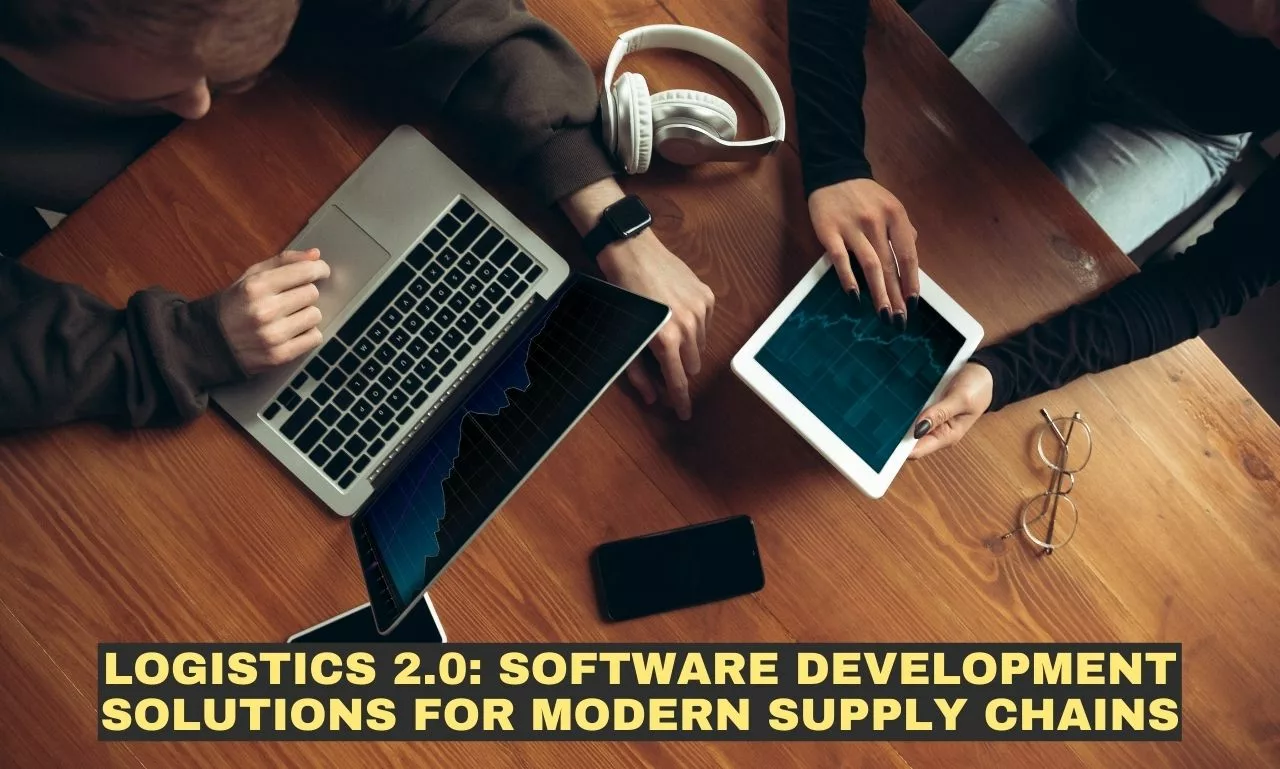In the ever-changing landscape of today’s global markets, efficient supply chain management has become paramount for businesses to thrive. With logistics software development, especially transportation software development, a company can achieve a lean supply chain, save costs, and significantly improve the bottom line. Logistics software development is pivotal in orchestrating the intricate movement of goods, services, and data across supply chains, optimizing operations, and enhancing customer satisfaction.
Table of Contents
Defining Logistics Software Development
Logistics software development is the creation of specialized software solutions to manage various stages of supply chain operations. Supply chain operations include inventory management and develop into demand forecasting, raw material sourcing, distribution, and transportation.
Key Features of Logistics and Transportation Software Development
Do you want to develop logistic software for your company? Take a look at the key elements:
Warehouse Management System (WMS)
The Warehouse Management System (WMS) streamlines the warehouse operations. Features include:
- Inventory tracking and management
- Stock optimization and space utilization
- Order processing and fulfillment
Transportation Management System (TMS)
The TMS is an essential part of logistics and transportation software development. Solutions offered by TMS include:
- Route optimization and planning: Optimize raw material demand routes and supply routes. Cut costs, increase productivity and efficiency, and reduce the distance between raw material, manufacturing, and delivery points.
- Freight cost calculation and tracking: Automate freight cost calculation and remove redundancy.
- Carrier selection and management
Supply Chain Visibility and Analytics
- Real-time monitoring and reporting: Track supply chain operations to find loophole patterns and increase efficiency.
- Data analytics for decision-making
- Predictive insights for demand: Stay atop trends and make objective, informed, and data-driven decisions to drive demand and growth.
Collaboration Tools
- Communication among stakeholders: Establish seamless communication between all stakeholders through the logistics software.
- Supplier and partner integration
- Information sharing across the supply chain: All essential partners should have access to information at every stage of the supply chain. Categorize entries and create access restrictions, especially for need-to-know data.
Logistics Software Development Process
When you want to build logistics software, you need to understand the development process.
Understand Your Business Needs
You must understand the specific needs of the business and the intricacies of its supply chain operations.
Software Architecture
Get a design team to create the software architecture (UI/UX). The architecture or framework must accommodate various functionalities and integration points.
Development and Coding
From the design stage, commence the development. The development stage includes writing code and building the software solutions according to the design functionality. There may be back and forth between you, the design team, and the development team.
Testing and Quality Assurance
Thoroughly test the software for bugs or issues. Separating the development team from the quality assurance team is good practice.
Deployment and Implementation
Your software is ready for usage. Roll it out across the supply chain and integrate its functionalities with existing systems.
Maintenance
Continuously monitor the software, maintain its functionality, and deploy necessary updates.
Trends in Logistic Software Development: Stay Ahead of the Competition
Logistics software development is evolving rapidly, incorporating cutting-edge technologies for efficient operations. Let’s explore trends you must consider when you build transportation software.
Internet of Things (IoT) Integration for Real-time Tracking: With IoT, you can enable real-time tracking of assets, vehicles, inventories, and shipments. The function enhances visibility, accountability, and transparency amongst all partners.
Artificial Intelligence (AI) and Machine Learning (ML): AI and ML offer Predictive Analytics; that is, with the algorithm, your software can analyze data to provide insights into trends, demand patterns, and potential disruptions.
Blockchain Technology: Ensure transparent, fast, and secure transactions with Blockchain technologies. You can also enable private transactions and deploy smart contracts for every possible instance during operations.
Cloud-based Solutions for Scalability and Accessibility: Scale with ease with Cloud platforms. You can adapt quickly to changing demands. Avoid the cumbersomeness and extremely pricey nature of physical data storage facilities, and enjoy customized cloud-based services that match your needs.
Conclusion
Logistics software development is meant to streamline your operations, improving your profitability by cutting unnecessary expenses. Of course, you need to consult professionals at every level of the developmental process. But most importantly, you need a thorough understanding of what your software should achieve. There are also options for logistics software that can be integrated into the systems of smaller companies. If using an already-created logistics software will cut development costs and still improve operation efficiency, you should use it.
